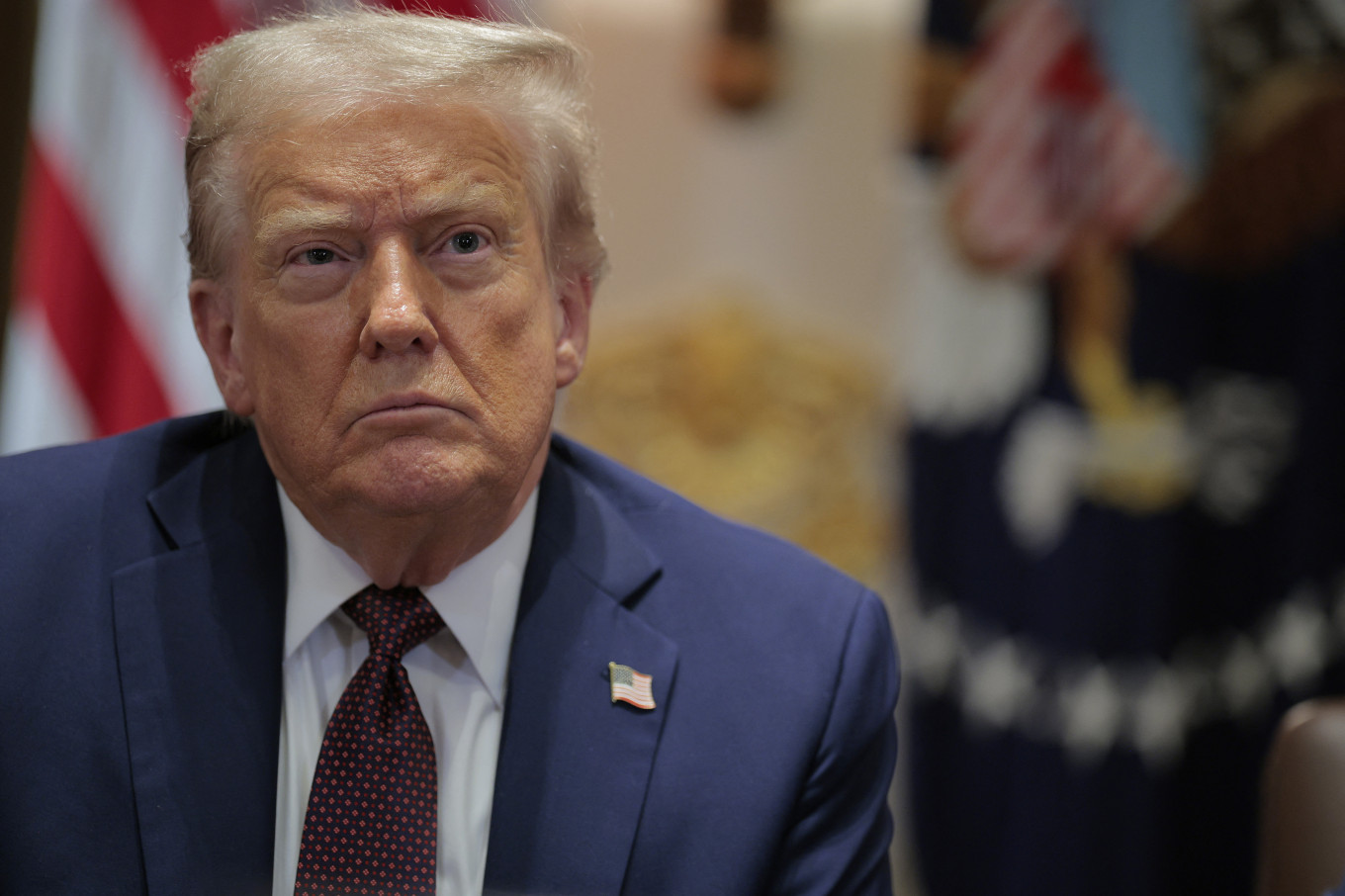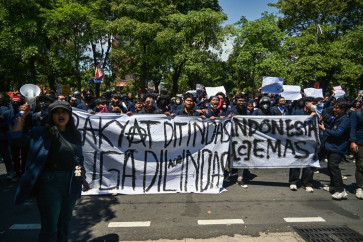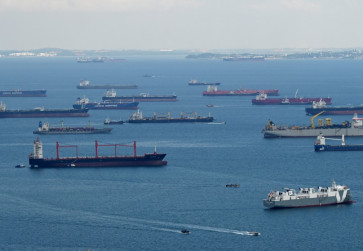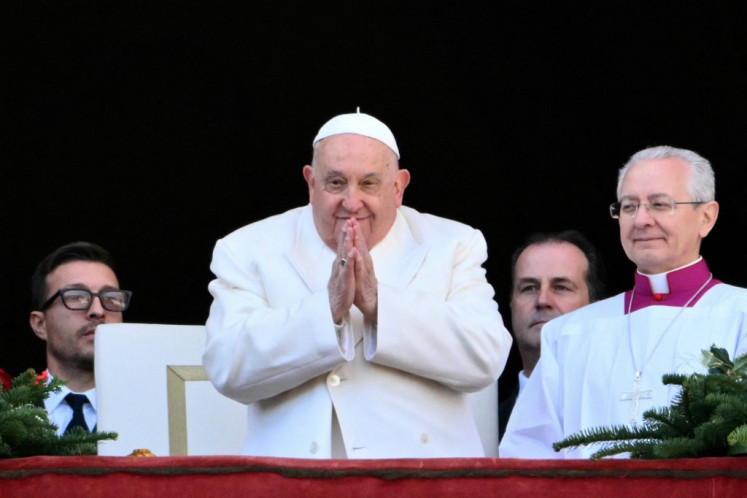Popular Reads
Top Results
Can't find what you're looking for?
View all search resultsPopular Reads
Top Results
Can't find what you're looking for?
View all search resultsUS foreign policy is restructuring the world order
Unlike when the US held unipolar power, times have changed as China and the BRICS countries have begun fashioning a non-militarized, multipolar world.
Change text size
Gift Premium Articles
to Anyone
For the first time in its modern history, the United States faces a formidable rival: a China that is fast outpacing it.
After the collapse of the Soviet Union in December 1991, the US emerged as the supreme superpower. Not surprisingly, the global system was designated “unipolar.”
That is no longer the case.
Policymakers in the US are divided over how to regain its lost primacy. Current policies under Trump 2.0 are confusing friends and foes alike, even as they escalate the restructuring of international relations.
Enter China, there is enough data to show why the US calls it a “pacing threat.”
Though the GDP of America is higher than China’s, according to IMF projections for 2025, China’s purchasing power parity (PPP) is 1.33 times that of the US. Despite its significantly lower GDP, its annual growth rate is much higher than that of the US.
Chinese manufacturing output in 2024 stood at 27.7 percent of the global share. The US Federal Reserve says that over the past two decades, China has become a manufacturing powerhouse. Its global trade volume surpasses the US, it has the largest trade surplus, and it is the top trade partner for more than 100 countries.
It is not just the economy.
According to the US Department of Defense, the Chinese navy is the largest in the world with more than 370 platforms, with its mine warfare, aircraft carriers and fleet auxiliaries outcompeting the US. The Chinese air force and unmanned aerial systems are comparable to the US Air Force.
China is ahead of the US in the technology race in 37 out of 44 key areas and holds monopolies in several.
Its strategic partnership with Russia is viewed by the US as a major threat. US policymakers and the strategic elite are divided on how to deal with this, leading to contradictory statements and policies. The chaos has evoked responses from nations that appear to favor China, Russia and the multipolar restructuring already in process.
A section of US policymakers argue that the country is militarily overstretched across the world with too many commitments and wars. It is taking too much of the burden of the Ukraine war, and it is time to share it. This approach advocates that the US turn to isolationism.
The opposing position comes from the neoconservatives who influenced former president Joe Biden’s policy toward China and multipolarity. Many in Trump’s current cabinet also share this position, Marco Rubio and Elbridge Colby, for instance. Think tanks such as the Heritage Foundation, the Center for Strategic and International Studies, RAND Corporation, the Atlantic Council and others are also proponents.
This faction calls for strengthening NATO, increasing alliances in the Indo-Pacific, continuing support for the Ukraine war, applying economic coercion against countries that do not conform with US strategic interests, and opposing authoritarian states. In other words: containment of China, support for Ukraine, and restraints on BRICS and other anti-West forums.
President Trump appears to be using both strategies, shifting from one to the other.
He has levied tariffs on 100 countries, many of whom view this as hostile economic pressure. Each of these countries has been negotiating with the US, but also diversifying trade and value chains to protect themselves from Washington’s erratic behavior.
Trump and Vice President J.D. Vance have warned NATO European countries that they must increase defense expenditure and buy weapons from the US to sustain the war in Ukraine as it gradually eases itself out. The US president has engaged in direct talks with President Vladimir Putin in Alaska, and his confidant Steve Witkoff has negotiated with the Russians. At the same time, they have also promised more missiles for Ukraine.
America’s backing of Israel’s policies, its bombing of Iran’s nuclear facilities and its support for Israeli strikes in Doha, Qatar, a major US ally that hosts one of the biggest air bases in the region, show that the US is not “isolationist” by any stretch.
At the same time, US allies in West Asia are now exposed to its erratic positions: support for Israel’s territorial expansion, seeking control of regional airspace, desiring regional hegemony and claiming that it is “restructuring” the Middle East. These allies will look for long-term alternatives in the times ahead.
President Trump’s negotiated deals with Japan, South Korea and EU countries have meant that these countries have had to commit to major investments in the US. South Korea, for example, will rebuild the US shipping industry. EU countries will buy US gas and help industrialize the US at their own cost.
All this resembles a restructured US imperialism that extracts surplus from clients in exchange for protection. However, the clients are beginning to question these forced investments that resemble tithes. Unlike when the US held unipolar power, times have changed and other options are available.
That option is China, and the BRICS countries, which are busy constructing a non-militarized multipolarity. They are encouraging global trade on a fair basis without pressure or embargoes.
---
The writer is an adjunct professor at O.P. Jindal Global University. The article is republished under a Creative Commons license.











